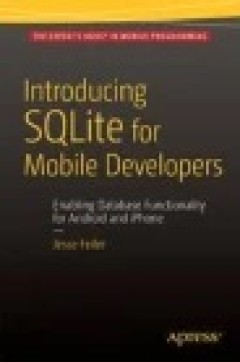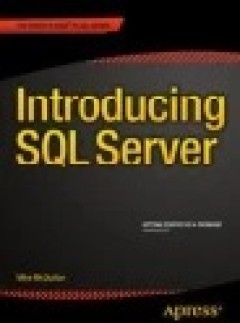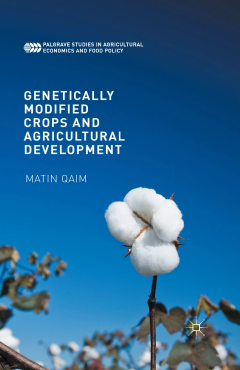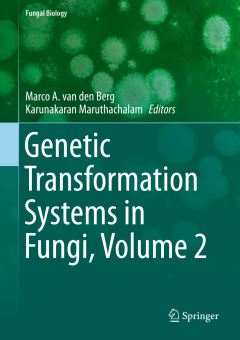Filter by

Introduction to Fluorescence Sensing
Fluorescence is the most popular technique in chemical and biological sensing and this book provides systematic knowledge of basic principles in the design of fluorescence sensing and imaging techniques together with critical analysis of recent developments. Its ultimate sensitivity, high temporal and spatial resolution and versatility enables high resolution imaging within living cells. It dev…
- Edition
- -
- ISBN/ISSN
- 978-3-319-20780-3
- Collation
- -
- Series Title
- -
- Call Number
- -

Introduction of Biotechnology in India’s Agriculture: Impact, Performance a…
Biotechnology can bring major breakthroughs in agriculture. The book examines the experience of introduction of biotechnology in Indian agriculture, specifically, examining the performance of Bt cotton versus non-Bt cotton across India’s major cotton states, namely Andhra Pradesh, Gujarat, Maharashtra and Tamil Nadu, which together account for nearly 70 percent of the country’s cotton produ…
- Edition
- -
- ISBN/ISSN
- 978-981-10-1091-0
- Collation
- -
- Series Title
- -
- Call Number
- -

Introducing SQLite for Mobile Developers
This brief book is an introduction to SQLite for both iOS and Android developers. The book includes an optional introduction to SQL, a discussion of when to use SQLite, and chapters devoted to using SQLite with the most likely programming languages and then goes through adding a simple database to an Android or iOS app and finally a chapter on managing the app’s life cycle. What You Will L…
- Edition
- -
- ISBN/ISSN
- 978-1-4842-1766-5
- Collation
- -
- Series Title
- -
- Call Number
- -

Introducing SQL Server
Introducing SQL Server is a fast and easy introduction to SQL Server and the world of relational databases. You’ll learn how databases work and how to use the T-SQL language by practicing on one of the most widely-used and powerful database engines in the corporate world: Microsoft SQL Server. Do you quake at the sight of a SELECT statement? Start to shiver when people start talking about …
- Edition
- -
- ISBN/ISSN
- 978-1-4842-1419-0
- Collation
- -
- Series Title
- -
- Call Number
- -

Genetically Modified Crops and Agricultural Development
“This book is the second publication in the ‘Palgrave Studies in Agricultural Economics and Food Policy’ series, and targets both professional and lay audiences. … this book can be recommended to a wide readership; excellently written, it is one of the first books to address both the technical and policy dimensions of GMCs in development.” (George H. L. Rothschild, Food Security, Vol.…
- Edition
- -
- ISBN/ISSN
- 978-1-349-56167-4
- Collation
- XVII, 206
- Series Title
- -
- Call Number
- 330 QAI g

Genetic Transformation Systems in Fungi, Volume 2
Fungi are an economic very important class of microbes. Not only do they host a range of versatile enzymes used in industrial applications (biofuels, laundry, food processing), as well do they produce several very important pharmaceutical drugs (statins and penicillins). Moreover, fungal pathogens can cause great damage in agricultural production (Phytophthora and Botrytis) and during mammalian…
- Edition
- -
- ISBN/ISSN
- 978-3-319-10502-4
- Collation
- -
- Series Title
- -
- Call Number
- 571.6 Gen

Integrated Supply Chain Planning in Chemical Industry
Thomas Kirschstein provides an overview on methods and approaches for planning and optimizing large-scale chemical production networks. The focus is on an integrated modelling of chemical production processes, logistical processes as well as environmental effects. Therefore, a hybrid simulation framework is designed taking into account time series models for modelling chemical production proces…
- Edition
- -
- ISBN/ISSN
- 978-3-658-08433-2
- Collation
- XXII, 245
- Series Title
- -
- Call Number
- 360 kir i

Structural Studies of Liquids and Glasses Using Aerodynamic Levitation
This thesis presents neutron scattering data that contribute to the understanding of four distinct areas of condensed matter physics, including iso-compositional liquid-liquid phase transitions and the glass formation in rare earth doped BaTi2O5. In situ aerodynamic levitation with laser heating was combined with neutron scattering in order to study both liquid-liquid phase transitions in (Y…
- Edition
- -
- ISBN/ISSN
- 978-3-319-06575-5
- Collation
- -
- Series Title
- -
- Call Number
- -

Environmental and Social-economic Impacts of Sewage Sludge Treatment The Evi…
This book presents an experimental simulation of sewage treatment, which is designed to evaluate the environmental and social-economic impacts of integrated sewage treatment policies. The author puts forward a comprehensive linear optimization simulation model that takes the environmental, energy and economic systems into consideration. Beijing was selected as a typical Chinese city for the pur…
- Edition
- -
- ISBN/ISSN
- 978-981-287-948-6
- Collation
- 28 b/w illustrations, 5 illustrations in colour
- Series Title
- -
- Call Number
- -

Environmental and Resources Geochemistry of Earth System Mass Transfer Mecha…
The Earth system consists of subsystems that include the atmosphere, hydrosphere (water), geosphere (rocks, minerals), biosphere, and humans. In order to understand these subsystems and their interactions, it is essential to clarify the mass transfer mechanism, geochemical cycle, and influence of human activity on the natural environment. This book presents fundamental theories (thermodynamics,…
- Edition
- -
- ISBN/ISSN
- 978-4-431-54904-8
- Collation
- 38 b/w illustrations, 125 illustrations in colour
- Series Title
- -
- Call Number
- -
 Computer Science, Information & General Works
Computer Science, Information & General Works  Philosophy & Psychology
Philosophy & Psychology  Religion
Religion  Social Sciences
Social Sciences  Language
Language  Pure Science
Pure Science  Applied Sciences
Applied Sciences  Art & Recreation
Art & Recreation  Literature
Literature  History & Geography
History & Geography